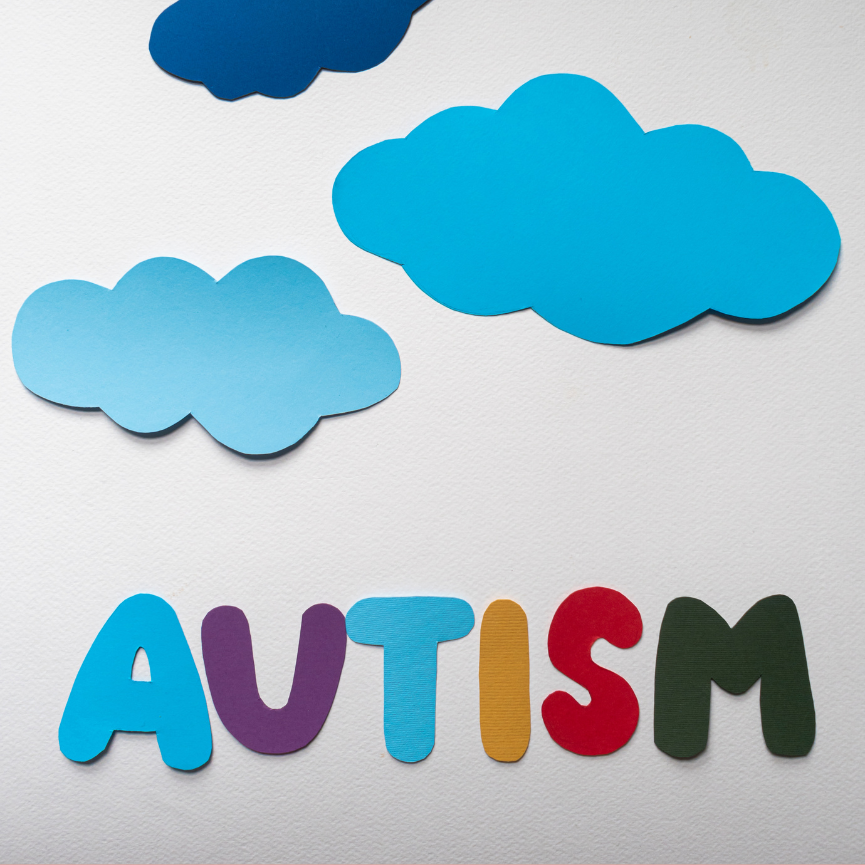
- Sep 21, 2024
- 115 Views
- 0 Comments
Understanding The Autism Spectrum: Beyond The Stereotypes
Understanding Autism Spectrum: Breaking Myths & Embracing Diversity
Autism Spectrum Disorder (ASD) is a condition that has often been misunderstood and, at times, unfairly stereotyped. We’ve all seen the “autistic genius” in movies or heard the idea that everyone on the spectrum behaves in a specific way. But what’s the truth? Autism is not a one-size-fits-all diagnosis, and each person with autism experiences life in a unique way. In this article, we’ll explore the complexities of autism, debunk common myths, and move beyond the stereotypes that society often attaches to this condition.
Defining Autism Spectrum Disorder (ASD)
Autism Spectrum Disorder, or ASD, refers to a range of conditions characterized by challenges with social skills, repetitive behaviors, speech, and nonverbal communication. But the key word here is “spectrum.” It means that no two individuals with autism will have the exact same experience. The spectrum encompasses a wide range of abilities and support needs.
Why It’s Important to Go Beyond Stereotypes
We live in a world where misconceptions about autism can lead to misunderstanding, exclusion, and even discrimination. For society to truly support the autistic community, we need to shift away from the oversimplified, sometimes damaging labels, and embrace the full diversity of the autism spectrum.
Common Misconceptions about Autism
The Myth of the “Savant” or “Genius”
One of the most pervasive stereotypes is that all autistic individuals possess savant abilities, like the ability to solve complex math problems in seconds or play a musical piece after hearing it just once. While some people on the spectrum do have extraordinary talents, it’s far from universal. This myth can place unrealistic expectations on those with autism.
Autism is Not a One-Size-Fits-All Diagnosis
Autism manifests differently in every individual. While some may require significant support with daily tasks, others may live independently, have careers, and build families. We must respect and acknowledge the full range of experiences on the autism spectrum.
Understanding Neurodiversity and Autism
Neurodiversity is the idea that neurological differences like autism, ADHD, and dyslexia are natural variations of the human brain. Instead of seeing autism as a “deficit,” neurodiversity advocates view it as one of the many ways the brain can develop and function. This framework promotes inclusion and acceptance rather than focusing on “fixing” individuals with autism.
The Autism Spectrum: What Does It Mean?
The Concept of a Spectrum
When we say “spectrum,” we mean that autism is not a linear scale from “less autistic” to “more autistic.” Instead, it’s more like a rainbow where different colors represent varying traits. An individual may excel in some areas but face challenges in others. Understanding this helps us recognize the unique strengths and needs of each person with autism.
How Different Individuals Experience Autism
Some people with autism may have strong verbal communication skills, while others may rely on non-verbal methods, such as gestures or communication devices. Similarly, one individual may be sensitive to sound, while another may have difficulty with changes in routine.
The Varying Levels of Support Needs
Support needs vary significantly across the spectrum. Some individuals might need assistance with daily living tasks, while others require minimal support. It’s crucial to understand that needing more support doesn’t make someone “less capable” — it simply reflects their unique circumstances.
Key Traits of Autism Spectrum Disorder
Communication Differences
Communication challenges are a hallmark of autism, but they vary widely. Some people may struggle with verbal communication, while others may have difficulty understanding social cues like body language or tone of voice. However, many individuals with autism can and do communicate in ways that work for them, sometimes using technology or alternative methods.
Social Interaction Challenges
Autistic individuals may find social interaction challenging due to difficulties in reading social cues or interpreting others' emotions. This doesn’t mean they don’t desire social connections; rather, they often need different strategies for engaging with others.
Sensory Processing and Autism
Many individuals with autism experience differences in sensory processing. This can include heightened sensitivity to lights, sounds, or textures, or conversely, seeking out sensory input, such as touching certain objects. Sensory experiences are highly individualized but play a significant role in day-to-day life for many on the spectrum.
Moving Beyond Labels and Stereotypes
Why Labeling Can Be Harmful
While a diagnosis can provide clarity and access to resources, labeling individuals with stereotypes like “high-functioning” or “low-functioning” can limit their potential. These labels often ignore the complexities of the individual and their evolving needs and abilities.
How Media Misrepresentation Contributes to Stereotypes
Movies and TV shows have a habit of portraying autistic characters in narrow ways, either as the “quirky genius” or as someone incapable of independent living. These portrayals can shape public opinion, leading to oversimplified and inaccurate views of autism.
The Role of Parents and Caregivers in Dispelling Myths
Parents and caregivers play a crucial role in educating others about autism. By sharing their experiences and advocating for their children, they help break down harmful stereotypes and build a more inclusive society.
Embracing Neurodiversity
What is Neurodiversity?
Neurodiversity is the idea that neurological differences are natural variations in the human genome. Just as we celebrate diversity in culture and appearance, we should celebrate differences in how people think and perceive the world.
The Benefits of Celebrating Neurological Differences
When we embrace neurodiversity, we open ourselves to new ways of thinking, problem-solving, and innovation. Many individuals on the spectrum offer unique insights and talents that enrich our communities.
Real-Life Examples of Neurodiverse Achievements
From successful entrepreneurs to groundbreaking artists, many individuals with autism have made significant contributions to society. Their stories remind us that autism is not something to “overcome” but something to embrace as part of the human experience.
Building an Inclusive Society
Autism Awareness vs. Autism Acceptance
Awareness is the first step, but true inclusion comes from acceptance. Rather than just acknowledging that autism exists, we need to create environments where autistic individuals feel valued and supported.
How Schools and Workplaces Can Foster Inclusion
Schools and workplaces must go beyond accommodations and create truly inclusive environments. This includes providing sensory-friendly spaces, flexible working hours, and better support for communication needs.
The Importance of Community Support and Resources
Building a community that understands and supports autism is key to fostering inclusion. From local support groups to nationwide organizations, these networks offer invaluable resources for individuals and families affected by autism.
Autism is as diverse as the people who experience it. By moving beyond stereotypes and embracing the full spectrum, we can foster a more inclusive society that values the contributions of all individuals. The goal isn’t to “fix” autism but to build a world where everyone, regardless of neurological differences, has the opportunity to thrive.



Comments - 0 comments till now